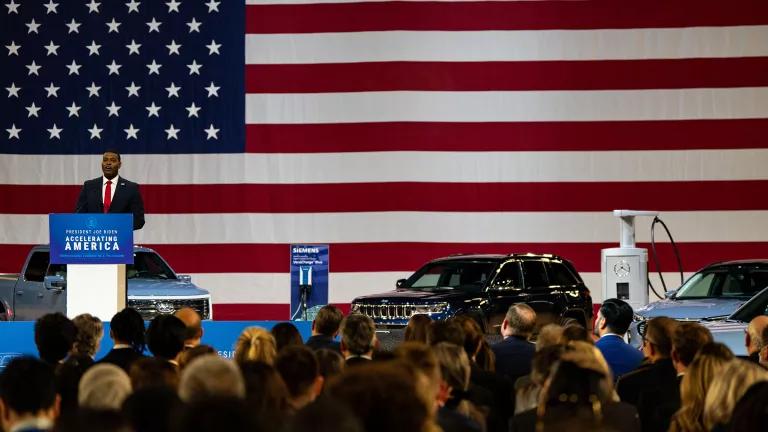Minnesota Could Reap $30 Billion Driving on Electricity

What would happen if millions of Minnesotans ditched gasoline and started to drive on cleaner, cheaper electricity? A new report from MJ Bradley & Associates answers that question, demonstrating that Minnesota could realize upwards of $30 billion in avoided expenditures on gasoline and maintenance, reduced utility bills, and environmental benefits by 2050.
$9 Billion in Driver Savings
Driving on electricity in Minnesota is the cost-equivalent of driving on $1.17 per gallon gasoline and electric cars have fewer moving parts and less required maintenance. At levels of electric vehicle (EV) adoption that are consistent with meeting the state’s 2050 greenhouse gas reduction goals, those fuel and maintenance savings add up.
And those are savings Minnesota can bank on because the price of electricity is not only significantly cheaper than the price of gasoline, it’s inherently more stable because electricity is made from a diverse supply of domestic resources. And unlike the volatile world oil market, Minnesota’s electric sector is regulated by the state’s Public Utilities Commission (PUC). Adjusted for inflation, the price of electricity been steady around the dollar-a-gallon equivalent mark in Minnesota for the last 20 years.
$10.2 Billion in Reduced Electric Bills
Minnesota can charge millions of EVs without the need to make significant investments in the electric grid because EVs can be charged when the grid is underutilized and renewable energy is abundant, like when people are sleeping overnight, and wind energy generation often peaks. And the billions of dollars in new utility revenue from EV charging (money that would otherwise go to oil companies) in excess of associated costs will be automatically returned to utility customers per a PUC accounting mechanism known as “revenue decoupling” that is already in place. Accordingly, widespread EV adoption could reduce every utility customer’s electric bill.

Minnesota’s PUC should encourage the electric utilities it regulates to make investments in EV charging stations and other programs that will help ensure Minnesotans realize those benefits sooner rather than later.
$10.4 Billion in Societal Benefits from Reduced Pollution
The MJ Bradley & Associates report estimates that widespread EV adoption would dramatically reduce emissions of greenhouse gases from passenger vehicles in Minnesota.

Accordingly, EV adoption could help Minnesota reach its 2050 target for reducing greenhouse gases and yield $10.4 billion in societal benefits in the process.
The Bottom Line: Minnesota Should Act Now to Accelerate its EV Market
Adding it all up, that’s more than $30 billion in potential benefits to Minnesota by 2050. Here’s the catch: as of January 2018, there were only 6,300 EVs registered in Minnesota, which means the state needs to accelerate the EV market to capture those billions of dollars in potential benefits. Thankfully, with second generation, longer range, affordable EVs now available, the market is well positioned to expand rapidly, and Minnesota’s PUC is already taking steps to encourage the electric industry to propose investments in charging infrastructure and other programs that will help the state seize this opportunity.



